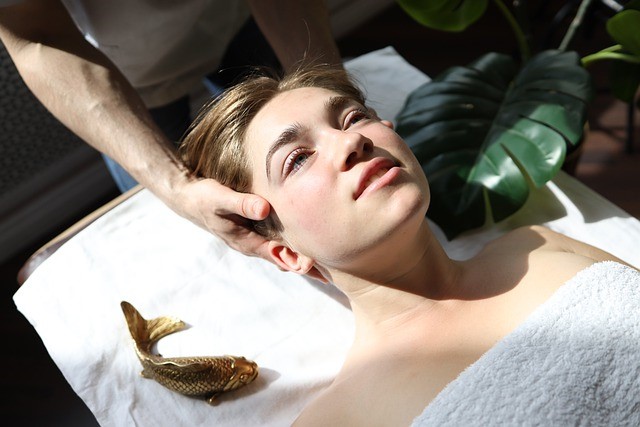
We are not always satisfied with our physical appearance. In fact, very few people are. We almost always want to improve a certain aspect of our face or our body and, therefore, many people are willing to go through an operating room to undergo surgery.
Usually, these operations are usually simple and are performed in a short time. However, this does not guarantee that they will be 100% effective or that the desired results will be achieved with just one operation. Sometimes, it is necessary to repeat the procedure at least 2 or 3 more times.
Worse, sometimes expectations are very high and, therefore, they are not usually satisfied with the final results. In fact, there are those who end up feeling frustrated and wanting to reverse the situation, but it is too late for that.
What can be done in these cases? Should they resign themselves to waiting to see the results of the operation and take the risk? Is there a way to anticipate the facts and save yourself from bad experiences? The answer is yes. Today, thanks to the great advances in technology, you have the possibility to visualize what the results of your cosmetic surgery will be, before entering the operating room.
The miracle occurs thanks to the arrival of virtual reality in the world of aesthetic treatments. In this way, you can decide, with enough time in advance, if you undergo the operation or not, because you will already know what the results will be.
If you are interested in knowing how aesthetic operations are in virtual reality, in this post I will be telling you. You will know the different tools that exist and how they work. Tomorrow is here. Therefore, it is time to take advantage of these new tools to obtain the best results.
What do you need for aesthetic operations in virtual reality?
Some of the applications, of virtual reality technology, are the following:
- The 3D scanner. This scanner is responsible for taking different simulated images of patients, before they undergo a procedure or aesthetic treatment, in order to have a clearer and more accurate view of the final result.
- This not only brings benefits to the patient, but also makes it possible for the surgeon to make the necessary adjustments or modifications to ensure the best results. This is the best way to match the patient’s expectations with the surgeon’s skills and possibilities.
- 3D bioprints. Thanks to this technique, an operation can be foreseen and organized. Its efficiency is more than proven. Especially in atrial and bone reconstructions, where cosmetic surgery plays a fundamental role.
- This planning system reduces the time spent in the operating room, while increasing the accuracy of the results.
- The measurement of facial aging. As its name implies, this test allows to obtain a diagnosis in terms of facial aging and, taking into account this, to design a comprehensive aesthetic treatment so that it stops, as far as possible, the effect produced by the passage of time.
- The equipment used for this study is a facial morphic 3D scanner, which is computerized; a segmental morphological measurement system and a 3D corneal topography, which is responsible for measuring the collagen levels of the skin.
- In this way, it is possible to assess the levels of cellular oxidation and inflammation, as well as the wear and tear of the most important glands in the body.
Tips for aesthetic operations in virtual reality
Since this new technology allows you to visualize what your appearance will be after the operation, take the time to decide if this is how you want to look. Remember that once the surgery is finished, there will be no mark back.
While it is true that, many times, certain modifications can be made, keep in mind that, no matter how hard you try, you will hardly be the same as always and, it is likely, that you will have to learn to live with it, which could lead to frustration and new entrances to the operating room.
Also, talk to your attending physician and make sure they are clear about what you want to achieve with your surgery. That way, you’ll be sure that your doctor will be able to meet your expectations.
Once you have performed this test, it is best that the operation is performed by the attending physician, since, since he has also seen the final result you expect, it is more likely to give you satisfactory results.
Remember that this type of technology is not static, as if it were a simple photograph. Try to move from one side to the other to be clear about what each of your angles will look like. Bend over, get closer, walk away, vary your perspective so that you do not miss any important aspect.
By doing this, you will have a 90% chance of being satisfied with the final result of the operation and there will be no room for regrets and lamentations. Actually, you’ll save yourself a lot of headaches.
After the operation, take as much time as necessary to fully recover and do not rush to think that something has gone wrong. Remember that it is normal for you to look and feel a little inflamed. This is a common effect of any type of surgery, no matter how minimally invasive.
Only after a few weeks can you be sure that this will be your final appearance. Therefore, be patient, recover completely and enjoy the whole process, because the results will have been worth it.
Now that you know that this technology is here to stay, what are you waiting for to get the most out of it? Avoid the uncertainty of not knowing, exactly, what your appearance will be after the aesthetic operation. Virtual reality is no longer a thing of tomorrow and is here to stay and continue to evolve.



